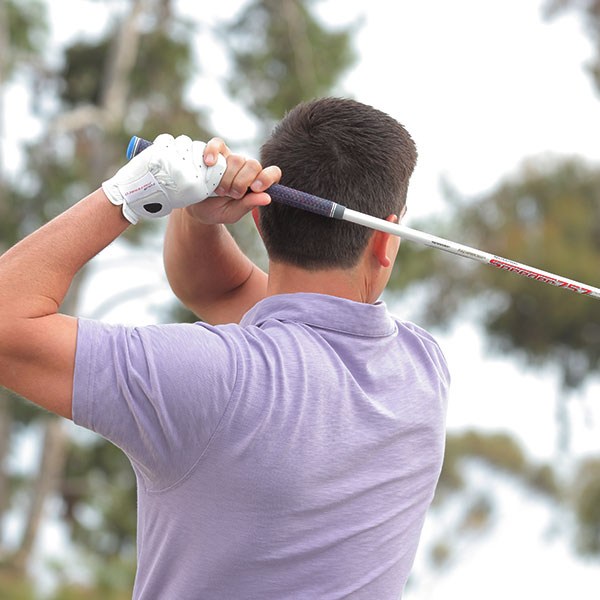SELECTING YOUR IDEAL GOLF GRIP
With the myriad of grip options available it’s no surprise that golfers are scratching their heads, wondering how to determine the best golf grip for their game. While there are hundreds of different grips (yes, hundreds!) to choose from, there are four main factors to consider when searching for the right grip:
1. SIZE Matters. This is the single most important factor when selecting a grip. There are four basic golf grip sizes: Undersize, Standard, Midsize and Oversize. Further customization can be achieved by adding extra layers of tape during installation. The general rule for determining the best size is using a grip that allows the tips of a player’s longest two fingers to barely touch their palms. In addition to hand size, players should also consider their personal grip strength. A player with limited hand strength may benefit from a slightly larger grip that allows a solid connection with less exertion. If you haven’t considered your grip size or haven’t been properly fitted, use Lamkin’s exclusive Interactive Grip Selector.
2.GRIP MATERIAL. Most grips are made of rubber or synthetic rubber materials. These grips are extremely durable and come in a variety of styles and colors. Some new synthetic materials, like Lamkin’s patented ACE 3GEN, offer the additional benefits of superior vibration dampening and long-lasting tackiness. For golfers who play in wet or humid conditions (or have wet hands), grips that include a CORD weave are very popular because they provide additional traction to prevent a player’s hands from slipping. Another option is a grip made with a unique-feeling thermo-plastic material. These grips, like the Lamkin iLINE, offer a much softer, tacky feel and are available in a wide variety of bold colors. Golfers should select a material best suited to their game, their climate and their personal preferences.
3. SURFACE TEXTURE. The design and pattern on the surface of a grip create either a smooth feel or a more coarse and abrasive feel. When selecting a grip, golfers should choose a texture that feels comfortable and secure. If a player doesn’t wear a glove, they may prefer a grip with less pattern and a smoother feel. Some players prefer a rougher texture and more aggressive pattern on their grips because it provides more hand traction and gripping confidence. Typically, grips with more texture perform very well in wet weather because they provide much-needed surface traction for increased slip-resistance.
4. GRIP FIRMNESS. Typically, firmer grips offer increased stability and incredible torsion control. These grips are ideal for high swing speed players because the prevent grip movement during a player’s swing. Firmer grips are favored by most Tour players.

